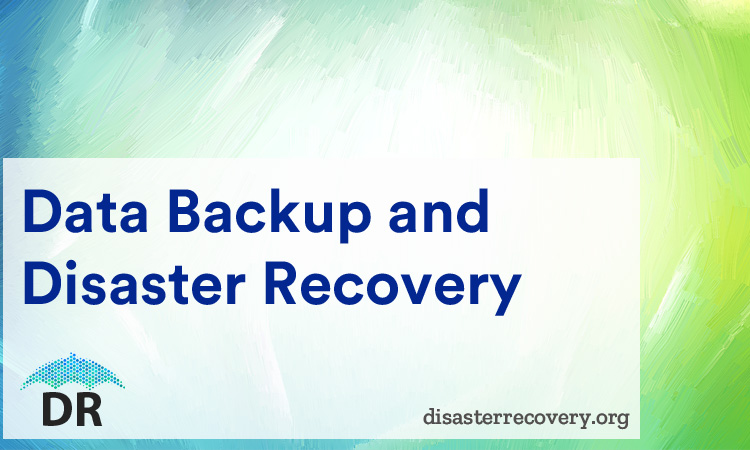Many people think that Data Back Up and Disaster Recovery are one and the same thing. This is not true. Data back-up refers to taking copies of data generated at fixed intervals or in real-time. The back-up can be done using tapes, disks or storing it in the cloud. On the other hand DR is an end to end solution when a disaster strikes. It not only covers the aspect of data recovery from the backed up data, it envisages restoration of production facilities and ensures that production is restored to reasonably acceptable levels till a permanent fix is done.
Data Backup and Disaster Recovery

Ever since cloud computing came on the scene, having a DR plan in the cloud was an alternative option. However, when the price of cloud computing services started dropping, it became one of the best options for Data Back Up and Disaster Recovery.
Data back-up in the cloud
The conventional method of backing up data was to take copies on tapes, disks etc. It was a relatively simple, straightforward method. The problem with this method was that the copies had to be stored at an off-site location or in fire proof cabinets on-site. However, a far more serious problem when using such methods is the integrity of the replication. Media or tape corruption is a serious problem that stymies restoration of data. Replicating data alone is not enough, but integrity checks have to be a part of the process.
When cloud computing services started being priced at reasonable levels, it became an attractive proposition. It was possible to back-up data in real time or, if that was not needed, at pre-determined intervals. Just a click of the mouse was sufficient to store the data in the cloud. The benefits were manifold such as:
- When the data was being restored, it had reliability in excess of 99%. This eliminated one of the biggest drawbacks of tapes, disks etc. In a disaster scenario, this level reliability met most business needs at a reasonable cost.
- Depending on business needs the RPO and RTO could be matched easily in the cloud. However, the smaller these metrics, the cost of the service increased proportionately. IT Managers had the option of having extremely small RPO’s and RTO’s, so much so, the customer would not even guess that a disaster event had taken place. The production stoppage was an insignificant blip.
- In a natural disaster scenario, the geographical area affected would be widespread. Even the off-site production center, kept in readiness, may be affected. When the back-up is in the cloud, the data is stored in a server which usually is in a different geographic area and redundancy is a part of the offering. In addition to this the cloud service provider will have their Disaster Recovery procedures in place and this gives an added layer of protection against total loss of data.
Disaster Recovery Plan in the Cloud
The Disaster Recovery Plan in the cloud can be put into action the moment a disaster is declared. The data can be recovered as per the RTO and RPO metrics. If the hardware on-site is partially or whole destroyed then the data can be accessed and restored by using virtual desktops, subject to proper authentication procedures. When the customer action is re-directed to the cloud, there will be a spike in traffic. However, one of the advantages of using the cloud is that services can be scaled up almost instantly.
Once production has been restored to reasonable levels, the IT Managers can move the organization into the Business Continuity phase. The organization can keep using the cloud for production till as such time they are able to set right the on-site production center. Costs are controlled because you pay only for whatever services are used and need not worry about redundant capacity etc.
Data back-up and disaster recovery are different but intertwined. With the cloud option being available, the IT Managers have an efficient, cost effective tool at their disposal for data back-up and disaster recovery.

